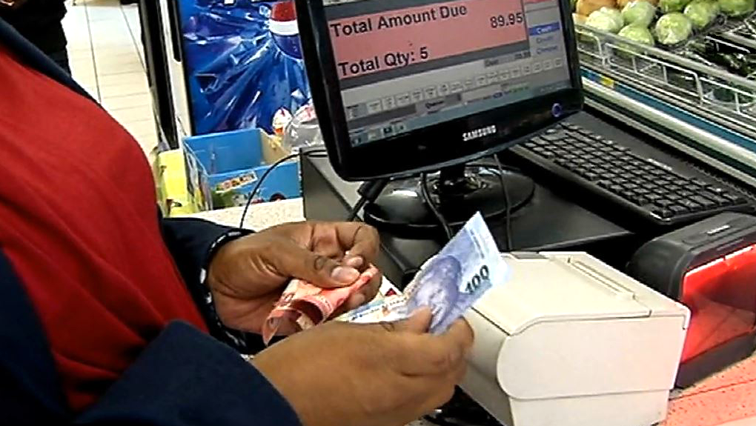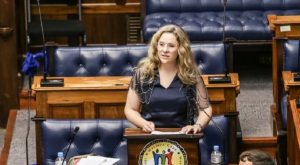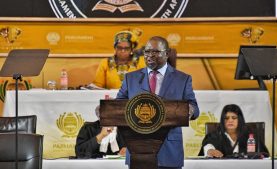Inflation erodes the value of the Rand and impacts negatively on our quality of life. There nevertheless seems to be a few advantages to high inflation rates such as that experienced in South Africa. One apparent advantage relates to long term loans (like homeloans).
Over time home owners pay off the original loan in values that depreciate rapidly. People who bought a house 20 years ago are now paying off loans denominated at the original purchase price and not on the current value of the property.
The original purchase price of a house bought 20 years ago may well be a tenth of the current market value. This gives the home owner the illusion of benefiting from inflation.
Another (tongue in cheek) beneficiary is the Minister of Finance. Each year the Minister presents a budget that generally reflects higher allocations to almost all state beneficiaries and departments.
However most of the increases announced is illusions and reflects the declining value of the Rand rather than an increase in the real value of allocations. For example the total consolidated expenditure for the 2019/20 financial year amounts to R1.83-trillion.
This is R160-billion more than the same figure for the 2018/19 tax year. This is a massive amount of money and points to an 9% increase in state expenditure. However at least three-quarters of the increase can be attributed to the declining purchasing power of the Rand.
For example if the inflation rate is taken to be six percent the increase in expenditure reflect only a 3% rise. Treasury project that inflation will fall from the current levels to closer to 5 percent over the next few years.
A 3% increase in expenditure is nevertheless significant (ask anyone who has to pay 3% more tax over-and-above the inflation rate). However only once the impact of inflation has been discounted do the real budget changes become apparent.
Transfers by the Department of Social Welfare to households (grants etc.) are set to increase from the current R162-billion to R175-billion. This is an 8% increase in total transfers. Once inflation has been removed from the estimates a small ‘real’ increase in the total value is evident.
Similarly the budget allocation to universities increase from the current R59-billion to R73-billion. This is a handsome 24% increase in revenue made in response to the expanded provision of free tertiary education. However although the allocation of funding to universities is rising dramatically there has not been a commensurate increase in the number of university students.
Treasury projections indicate that there will be 1.07 million students enrolled in university over the 2019/20 financial year. This is only a three percent increase over the 2018/19 figure placing the changing enrolment levels way behind growth in budget allocations.
The salaries and wages paid to state employees take the single biggest slice of revenues allocated. Generally over one-third of payments made by the state are in the form of compensation to employees. For 2019/20 R175-billion has been allocated to the compensation of employees (wages, salaries and associated benefits). This represents a 7.5 percent increase over the 2018/19 figure.
For public sector workers that the allocation, once again, allows for an above-inflation increase if the level of employment in the state does not increase. The public sector wage bill has been ballooning over recent years and the Minister seems to accommodate this trend continuing.
The Minister nevertheless indicated that measures are in place to reduce compensation of state employees by R27-billion over the next three years. These measures incorporate the recently announced elimination of performance bonuses for state employees.
The revenue allocations effectively place a ceiling on future public sector wage negotiations. Things look somewhat better for the President and Deputy president who have been allocated a salary increase of 9% this year.
Other increases in the budget include and allocation of R23-billion each year for the next three years for the restructuring of ESKOM. No similar allocated has been made for South African Airways (SAA) indicating that no extra-ordinary revenue support is to be given to that SOE.
Similarly there has been no extra-ordinary allocation to the SABC or SANRAL. This suggests, once again that no bailout of those entities are currently envisioned. Treasury nevertheless implicitly acknowledges the financial difficulties the national broadcaster faces.
It points to increases in revenue and staffing costs that are significantly below the expected rate of inflation. This means that SABC revenue and wages will, in real terms, decline over the next few years.
The failure to make extra-ordinary allocations to SABC, SANRAL etc. are due to the Ministers efforts to constrain national debt. Treasury indicates that debt repayment costs will amount to R202-billion in the 2019/20 financial year. This approximates 3.7 percent of GDP (the value of all goods and services produced in the country).
Treasury envisages that debt-servicing costs will rise rapidly over the next few years increasing by 22 percent over the next two years. By 2021/22 the costs of servicing the national debt will amount to 4% of GDP each year.
Overall the 2019/20 budget does not have those features one expects immediately prior to an election. Absent are the measures needed to ingratiate government with state worker, the union movement, pensioners and other grant beneficiaries. Perhaps it is hoped that the sobriety displayed by the Minister of Finance will be rewarded by economic progress and the support of rating agencies and tax payers.





